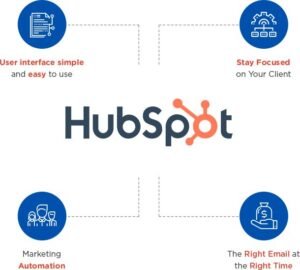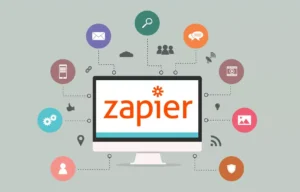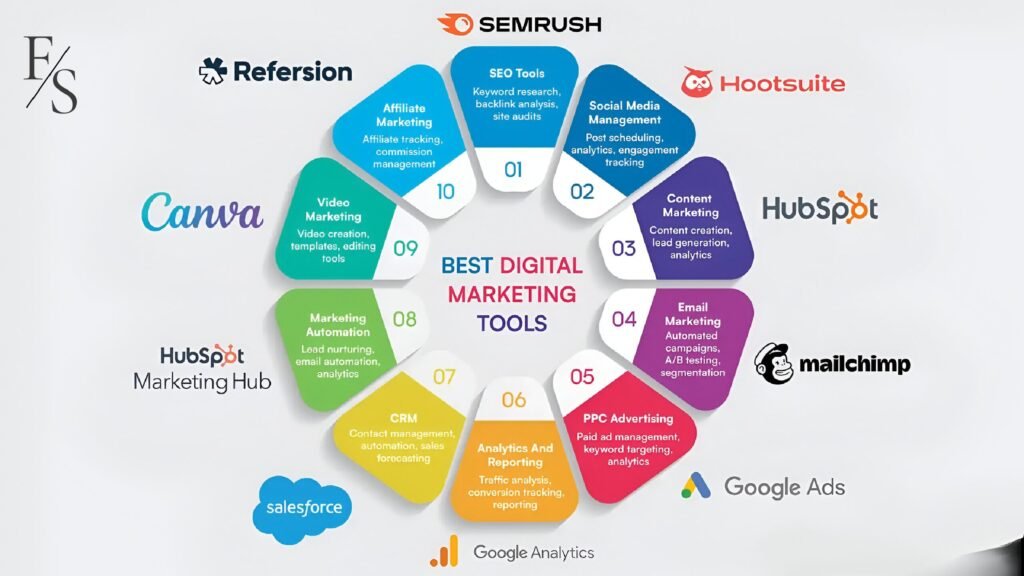Supercharge Your Strategy

In today’s hyper-competitive digital world, success belongs to those who move smarter, not just faster—and that’s exactly where supercharging your strategy comes into play. It’s not just about adopting the latest tools or chasing trends; it’s about creating a seamless, data-backed marketing ecosystem that works cohesively to drive consistent results.
By integrating powerful digital marketing automation tools into your workflow, you unlock the ability to personalize customer experiences, streamline repetitive tasks, and generate meaningful insights at every stage of the buyer journey. From automated lead nurturing and behavior-triggered emails to intelligent segmentation and real-time performance analytics, these tools allow you to act with precision, optimize campaigns on the fly, and scale with confidence.
Instead of guessing what your audience needs, you’ll anticipate it—delivering tailored content, offers, and messaging that convert interest into action. Whether you’re a solo marketer or leading a team, automation transforms your strategy from reactive to proactive, enabling you to focus on what truly matters: creativity, growth, and long-term impact. Supercharging your strategy isn’t a one-time move—it’s an ongoing commitment to smarter marketing that maximizes both efficiency and effectiveness.
What Are Digital Marketing Automation Tools

Digital marketing automation tools are specialized software platforms designed to streamline, simplify, and scale repetitive marketing tasks—allowing businesses to engage their audience more effectively while saving time and resources. These tools enable marketers to automate actions such as sending personalized emails, managing social media posts, scoring and nurturing leads, segmenting audiences, and analyzing campaign performance, all without the need for constant manual intervention.
By leveraging behavioral data and predefined workflows, automation tools ensure that the right message reaches the right person at the right time, dramatically increasing the likelihood of conversion. They also offer robust analytics that provide real-time insights into customer interactions, enabling teams to make data-driven decisions and continuously improve their strategies.
Whether you’re nurturing leads through a sales funnel, triggering welcome emails after a sign-up, or retargeting past visitors with tailored ads, automation tools help create seamless, consistent customer experiences across all touchpoints. For small startups and large enterprises alike, these platforms are essential for maximizing productivity, improving ROI, and maintaining a competitive edge in a fast-paced digital landscape.
With the right tools in place, you can:
- Nurture leads without lifting a finger
- Score and segment your audience automatically
- Track engagement and ROI in real-time
- Personalize content at scale
Best Digital Marketing Automation Tools

Choosing the best digital marketing automation tools can be a game-changer for businesses aiming to streamline operations, enhance customer engagement, and scale efficiently. Among the top contenders, HubSpot stands out as an all-in-one powerhouse, offering marketing, sales, and CRM automation in a single, user-friendly platform. Its customizable workflows, email automation, lead scoring, and robust analytics make it a favorite for inbound marketers.
Mailchimp is another popular choice, especially for email marketing, with drag-and-drop builders, smart segmentation, and behavior-triggered campaigns that suit businesses of all sizes. For e-commerce and B2C brands, Active Campaign combines email, SMS, CRM, and machine learning to deliver deeply personalized customer experiences. Marketo by Adobe is a go-to enterprise-level solution, known for its powerful lead nurturing and account-based marketing capabilities.
Get Response offers a full-suite marketing automation system with webinar hosting, sales funnels, and conversion-focused features ideal for growing businesses. Meanwhile, Zapier takes automation a step further by connecting your favorite tools—like Gmail, Slack, Shopify, and over 5,000 more—allowing you to automate workflows without writing a single line of code. Finally, platforms like Buffer and Hootsuite bring automation to social media, enabling scheduled posting, performance tracking, and audience engagement from a central dashboard. Each tool shines in its niche, but when thoughtfully combined, they form a cohesive tech stack that empowers businesses to run smarter campaigns, nurture customer relationships, and drive sustained growth through automation.
HubSpot Marketing Hub

What truly sets HubSpot Marketing Hub apart in the crowded field of digital marketing automation tools is its ability to unify strategy, execution, and analysis into one seamless experience. Beyond its robust set of automation features, HubSpot offers unparalleled customization and scalability, allowing marketers to build tailored experiences for every stage of the funnel—from the first touchpoint to post-purchase follow-ups.
With detailed contact tracking and behavioral insights, users can craft hyper-targeted campaigns based on how leads interact with emails, content, social media, and the website. Its powerful reporting dashboards offer full visibility into key performance metrics, giving you clarity on what’s working and where to pivot.
Marketers can also create custom workflows that automate not just marketing tasks, but cross-functional operations like lead handoffs to sales, internal notifications, and CRM updates—saving hours of manual work and reducing the chances of human error. HubSpot’s rich library of integrations means it can plug into your existing tech stack—whether you use Shopify, Salesforce, Slack, or Google Workspace—ensuring that your data flows freely and accurately between systems.
For businesses serious about inbound marketing and long-term customer relationship building, HubSpot Marketing Hub doesn’t just support your goals—it scales with them, empowering teams to work smarter, launch faster, and grow better in a competitive digital landscape.
Best for: Inbound marketing, lead nurturing, CRM automatio
Key Features:
- Drag-and-drop workflow builder
- Smart contact segmentation
- Automated email sequences
Mailchimp

Mailchimp has evolved far beyond a basic email platform to become one of the most versatile and accessible digital marketing automation tools on the market. With its intuitive interface, extensive template library, and powerful automation capabilities, Mailchimp empowers businesses of all sizes to deliver personalized, data-driven marketing at scale.
At the heart of its appeal is the ability to automate every part of the customer journey—from welcoming new subscribers and nurturing leads to re-engaging inactive users and sending behavior-triggered emails. Its built-in CRM allows for precise audience segmentation based on demographics, purchase history, or engagement level, helping marketers send the right message to the right person at the right time.
As one of the leading digital marketing automation tools, Mailchimp’s advanced analytics and A/B testing features provide the insights needed to continuously refine campaigns—optimizing subject lines, content, and send times for maximum impact. With e-commerce integrations like Shopify and WooCommerce, users can track customer purchases, send abandoned cart emails, and create dynamic product recommendations, all from a single platform.
Additionally, its multichannel capabilities extend beyond email—supporting social media ads, landing pages, and even printed postcards. Whether you’re running a small business, growing an e-commerce brand, or scaling up a marketing agency, Mailchimp combines ease of use with enterprise-grade features, making it an indispensable choice among digital marketing automation tools for automated, results-driven marketing.
Best for: Email automation, subscriber segmentation
Key Features:
- A/B testing
- Customer journey builder
- Product recommendations for e-commerce
ActiveCampaign

ActiveCampaign stands out as a powerful, all-in-one marketing automation platform that seamlessly blends email marketing, CRM, and sales automation to create truly personalized customer experiences. As one of the most advanced digital marketing automation tools available, it offers a deep automation engine that allows marketers to build sophisticated workflows using branching logic, behavior-based triggers, and automated messaging across multiple channels—including email, SMS, and site messaging. This high level of customization makes it ideal for businesses aiming to engage their audience at every stage of the customer journey.
With features like dynamic content, lead scoring, and detailed contact segmentation, marketers can craft highly targeted campaigns that feel one-to-one—even at scale. Its built-in CRM ensures alignment between sales and marketing teams, offering tools to manage pipelines, track deals, and automate follow-ups. Among the leading digital marketing automation tools, ActiveCampaign also excels in integrations—connecting with over 900 apps including Shopify, WordPress, and Zapier to streamline workflows.
Advanced reporting and AI-powered predictive tools provide insights into what drives engagement and conversions. Whether you’re a growing startup or an established enterprise, ActiveCampaign delivers enterprise-grade automation with user-friendly flexibility, making it a go-to solution for data-driven marketers seeking smarter, more connected campaigns.
Best for: Advanced automation and lifecycle marketing
Key Features:
- Split testing within automation
- CRM with sales automation
- Lead scoring & site tracking
Zapier

Zapier is the unsung hero of digital marketing automation tools, acting as a behind-the-scenes powerhouse that connects over 6,000 apps to streamline workflows, eliminate repetitive tasks, and supercharge productivity. What makes Zapier truly invaluable is its ability to automate complex sequences without any coding—allowing marketers to create “Zaps” (automated workflows) that move data between platforms like Mailchimp, HubSpot, Google Sheets, Facebook Ads, Slack, Shopify, and thousands more.
For example, you can automatically add leads from Facebook Lead Ads into your CRM, trigger a welcome email in Mailchimp, and notify your sales team in Slack—all from a single user action. This seamless integration between marketing, sales, customer service, and operations tools eliminates data silos and ensures real-time responsiveness. As one of the most versatile digital marketing automation tools available, Zapier’s user-friendly interface makes setting up automations intuitive, while advanced features like multi-step Zaps, filters, conditional logic, and paths allow for more nuanced, intelligent workflows.
Whether you’re automating lead nurturing, syncing contact databases, or triggering follow-up actions based on user behavior, Zapier empowers marketers to focus on strategy and creativity instead of manual tasks. In a world where time and precision matter more than ever, Zapier turns your disconnected tools into a well-orchestrated ecosystem—helping businesses scale faster, serve better, and work smarter.
Best for: Connecting apps and automating custom workflows
Key Features:
- 6,000+ app integrations
- No-code automation
- Multi-step workflows
Buffer
![]()
Buffer stands out as one of the most efficient and user-friendly social media automation tools, empowering marketers, creators, and brands to maintain a consistent and strategic online presence without the stress of real-time posting. Designed with simplicity and performance in mind, Buffer allows you to schedule, publish, and analyze content across major platforms like Instagram, Facebook, LinkedIn, Pinterest, and X (formerly Twitter) from one centralized dashboard.
Its visual calendar and queue system make it easy to plan campaigns in advance, ensuring that your content strategy stays on track even when you’re away. Buffer’s strength lies not just in posting, but in optimization—built-in analytics provide clear insights into engagement metrics, best-performing posts, and the ideal times to publish for maximum reach.
Features like tailored posts for each platform, hashtag manager, first-comment scheduling for Instagram, and link shortening help fine-tune your messaging to resonate better with each audience. Collaboration is also seamless, with team roles, approvals, and comment management tools that are ideal for agencies and growing teams. Additionally, integrations with Canva, Google Drive, and other productivity apps streamline your workflow even further. Whether you’re managing a personal brand or a multi-channel marketing campaign, Buffer helps transform social media from a daily chore into a powerful, automated engine for engagement, visibility, and growth
Best for: Social media scheduling and analytics
Key Features:
- Visual calendar
- Best time to post suggestions
- Engagement metrics and reports
Canva + Content Planner (Pro Tip Combo)

Benefits of Using Digital Marketing Automation Tools
Combining Canva with a content planner is a powerhouse strategy for marketers who want to streamline content creation while maintaining brand consistency and strategic timing. While not traditionally labeled as digital marketing automation tools, Canva and content planners work together to automate and optimize the creative process. Canva makes designing visually stunning, on-brand graphics effortless—even for non-designers—thanks to its drag-and-drop interface, extensive library of templates, stock images, fonts, and time-saving tools like Magic Resize and Brand Kit.
When paired with a content planner—whether it’s a built-in feature in Canva Pro, or external platforms like Notion, Trello, or Buffer’s calendar—you unlock the ability to not only create but also strategically map, schedule, and execute your entire content campaign in one smooth workflow. This combination functions similarly to other digital marketing automation tools by helping you automate planning, reduce manual tasks, and ensure consistency. It minimizes last-minute scrambling and content gaps by allowing you to visualize themes, plan campaigns in advance, and collaborate seamlessly with your team.
Whether you’re prepping seasonal promos, launching a new product, or running an evergreen strategy, this duo keeps your content pipeline full, cohesive, and ahead of the curve. With Canva’s creative freedom and a content planner’s organizational structure, your brand can consistently deliver quality visuals at scale—making this combo an essential pro tip for digital marketers aiming to save time, stay agile, and drive better results.

- Accelerates the Customer Journey
Digital marketing automation tools help guide prospects through each stage of the buyer’s journey faster and more effectively. With the right triggers and workflows in place, these digital marketing automation tools allow you to deliver tailored content and offers at just the right time—turning curious visitors into loyal customers without delays or bottlenecks.
- Enables Smarter Segmentation and Targeting
Digital marketing automation tools allow you to segment your audience not just by demographics, but by behavior, buying intent, and engagement history. This leads to hyper-targeted campaigns that speak directly to the individual’s needs, dramatically increasing open rates, click-throughs, and conversions.
- Improves ROI Across Campaigns
With automation handling the heavy lifting, your campaigns become more efficient and cost-effective. You’ll spend less on manual labor and reduce wasted ad spend by targeting the right people with the right message—leading to higher returns and lower cost per cquisition (CPA).
- Fosters Stronger Customer Relationships
Automation doesn’t mean being robotic—it means being consistently relevant. Automated email drips, personalized offers, and thoughtful follow-ups build trust over time, strengthening customer loyalty and increasing lifetime value without adding to your team’s workload. - Supports Omnichannel Marketing Strategies
Today’s consumers interact with brands across multiple platforms—email, social media, websites, chat, and more. Marketing automation tools enable you to coordinate efforts across these touchpoints from a single platform, ensuring a seamless and integrated experience for your audience. - Encourages Data-Driven Decision-Making
Rather than relying on guesswork, automation platforms give you access to real-time performance metrics and user behavior data. This makes it easier to identify what’s working, what’s not, and where to refine strategies—empowering continuous improvement based on actual results. - Streamlines A/B Testing and Experimentation
Many automation tools make it simple to run A/B tests on subject lines, content, call-to-actions, and more. This experimentation is critical for improving engagement and conversion rates, and with automation, you can test ideas at scale and get instant feedback. - Ensures Timely Communication with Leads and Customers
Automation tools allow you to respond to customer actions instantly—whether it’s sending a welcome email after a signup or a reminder when a cart is abandoned. This responsiveness enhances the user experience and keeps your brand top-of-mind when decisions are being made. - Reduces Cost of Customer Acquisition
By automating outreach and nurturing, businesses can dramatically cut down on marketing expenses while still delivering high-impact campaigns. The efficiency gained helps stretch budgets further, making automation a key tool for growth—especially for startups and small businesses. - Simplifies Workflow Collaboration Among Teams
Most automation platforms support user roles, approval flows, and shared dashboards—allowing marketing, sales, design, and leadership teams to stay aligned. This centralized visibility reduces miscommunication, speeds up decision-making, and keeps campaigns on track.
How to Choose the Right Tool

Selecting the right digital marketing automation tools isn’t about choosing the flashiest features or the most recognized brand—it’s about aligning each tool’s capabilities with your unique business goals, team workflows, and customer needs. Begin by identifying your core marketing objectives: are you looking to nurture leads, increase conversions, automate email campaigns, enhance social media efforts, or integrate CRM functionalities? Understanding your priorities will help you narrow down the digital marketing automation tools that best match your strategic vision.
Next, evaluate your team’s size and technical expertise. Some digital marketing automation tools offer intuitive, no-code interfaces ideal for beginners, while others are better suited for teams with advanced technical skills. Budget is another key factor—most platforms scale their pricing based on features or contact volume, so it’s essential to consider both your current and future needs.
Choose tools that integrate seamlessly with your existing tech stack—such as your CMS, CRM, eCommerce platform, or advertising tools—to prevent data silos and maintain a connected marketing ecosystem. Also, assess the level of customer support, onboarding assistance, and training resources provided. The best digital marketing automation tools should empower your team, not create additional complexity.
Lastly, take advantage of free trials and live demos. The ideal solution won’t just automate tasks—it will amplify your marketing strategy, deliver actionable insights, and drive long-term growth for your brand.
Final Thoughts: Automate Smarter, Not Harder
In the fast-paced world of digital marketing, automation is no longer a luxury—it’s a strategic imperative. But true success doesn’t come from automating everything blindly; it comes from automating the right things with the right digital marketing automation tools, aligned to clear goals. Smart automation means finding the balance between efficiency and personalization—removing repetitive tasks while still delivering meaningful, human-centered experiences to your audience. It’s not about replacing marketers, but about empowering them through digital marketing automation tools to focus on strategy, creativity, and data-driven decision-making.
Whether you’re streamlining email campaigns, nurturing leads through behavior-based journeys, managing content across platforms, or syncing your apps to run like clockwork, each tool you use should enhance—not complicate—your workflow. By choosing platforms that align with your brand’s needs, scaling thoughtfully, and continuously analyzing what’s working, you create a marketing ecosystem that is agile, intelligent, and built for long-term success. So as you move forward, remember: don’t just automate to do more—automate to do better. Let technology amplify your vision, optimize your time, and ultimately, help you deliver more impact with less effort.
Author :FIDHASHERIN VP


